VHF Radar Experiments Leonids
(2020-11-20) PE1ITR
At around 11 UTC on November 17, the Leonid meteor shower peaked. I turned on my 144 MHz radar for a few moments to receive backscatter reflections from these meteors.
A number of reflections were received. Below have looked at two further. I calculate the distance between the transmitter / receiver and these meteors. The probable position of the reflection area is shown on a map.
Events
Event 1
We call this reflection Event 1. Event 1 is a 2 second reflection at 2020-11-17 06:04:15 UTC. My antenna was almost perpendicular to the radiant of the meteor shower. I think then at 190 degrees azimuth.
Several other signals could also be received. This is the list of signals that I was able to identify in the spectrum recording:
144.363 MHz Station FSK441 F1HQM JN23LV QRB 840km QTF 182. (Decoded signal)
144.450 MHz Beacon F5ZVJ JN24GB QRB 822km QTF 185. (I hear FSK CW ..N24G.. mp3)
144.476 MHz Beacon F5ZAL JN12LL QRB 1013km QTF 191 (I hear A1A CW ..5ZAL..mp3)
144.488 MHz Beacon ?? Maybe F5ZRV JN05VE QRB 744km QTF 202 (Not sure, but beacon matches frequency list)
144.510 MHz Radar Backscatter reflection.
At the same time, MS signals from the 49.970 MHz Dourbes Beacon were observed in Waregem
and Kampenhout.
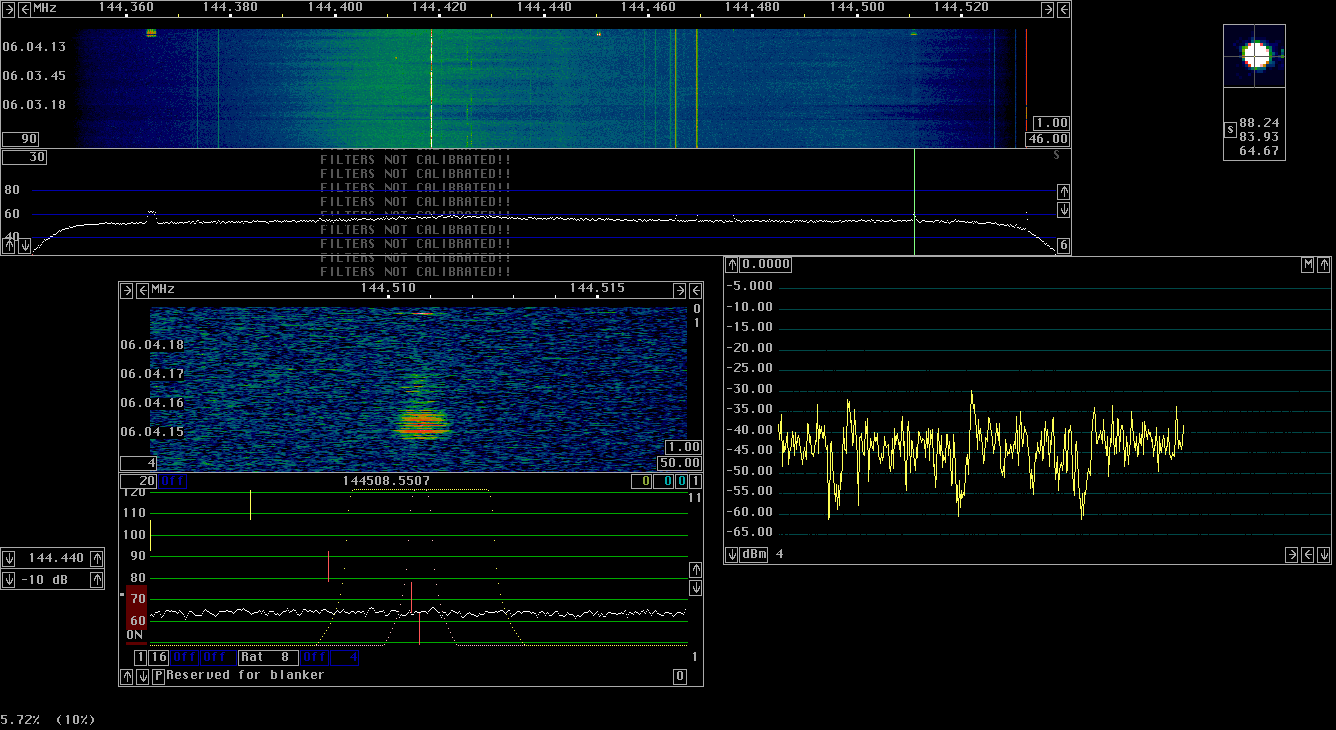
2020-11-17 06:04:15 UTC
Event 2
We call this reflection Event 2. Event 2 is also a 2 second reflection at 2020-11-17 09:53:39 UTC. Several other signals could also be received. This is the list of signals that I was able to identify in the spectrum recording:
144.360 MHz Station. ?? (No Decode)
144.366 MHz Station FSK441 F6BEG JN25JS QRB 632km QTF 184 (Decoded signal)
144.450 MHz Beacon F5ZVJ JN24GB QRB 822km QTF 185.
144.491 MHz Beacon ?? I think its a WSPR signal of any station. Maybe F6ABJ JN25NJ QRB 672km QTF 182. This station is showing as WSPR beacon in frequency list on between 144.489 and 144.492 (Not sure).
144.510 MHz Radar Backscatter reflection.
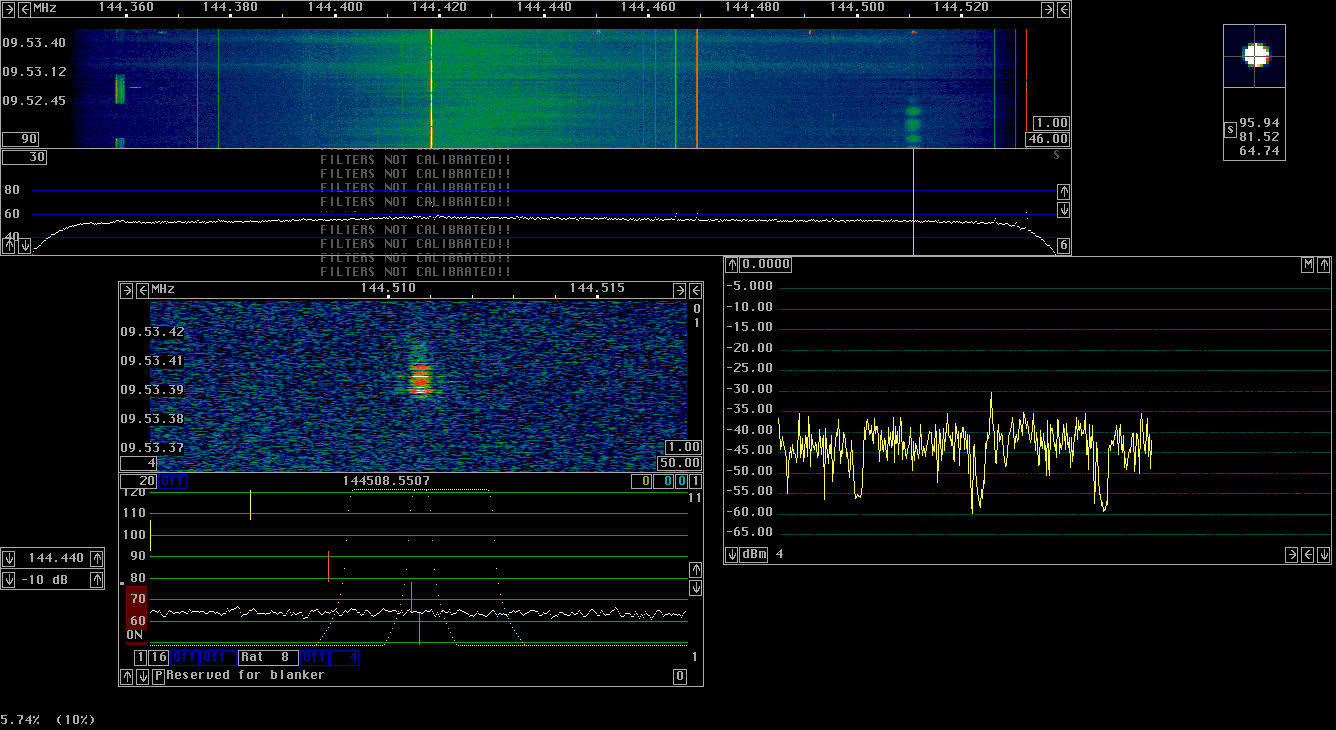
2020-11-17 09:53:39 UTC
Calculation of distance to meteor reflection
The calculation of the distance is not very accurate. I can easily be off by 50 km or more. Below is an attempt to determine the position of the meteor.
Event 1
I have measured the duration of the received reflection pulse. Pulses of 4 ms are emitted. However, the received pulses are slightly more than 1 ms in length. This means that the meteor reflection was at close range. I measured the duration of the received pulse and added the switchover time. This is the delay loop time of the reflection. The distance can be calculated from this.

Average puls duration of this screenshot is 78 samples (samplerate is 48000 Hz).
I measured a number of pulses over the delay time. Then converted to the probable distance. I then calculate a distance between 200 and 250 km. You can see that the distance is slowly decreasing. I think this is caused by the ionization area slowly expanding in my direction or moving along the path of the meteor.
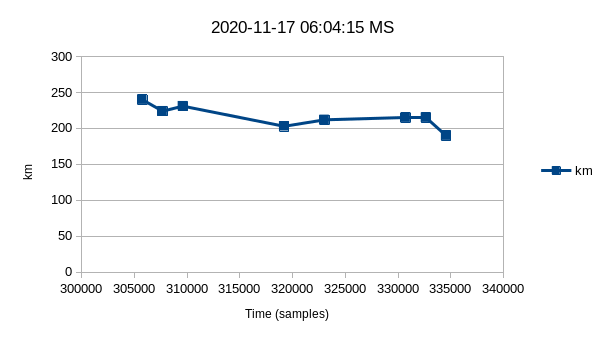
Several pulses in time versus distance.
Out of curiosity I then plotted the position of the received stations on a map with the probable distance to the meteor reflection area. You can reasonably determine from this where the reflection must have taken place.
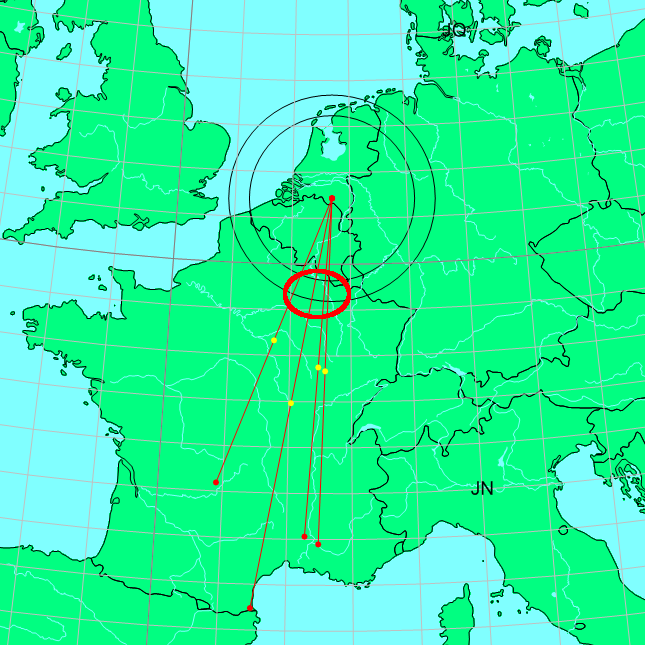
The red elipse is showing the reflection area.
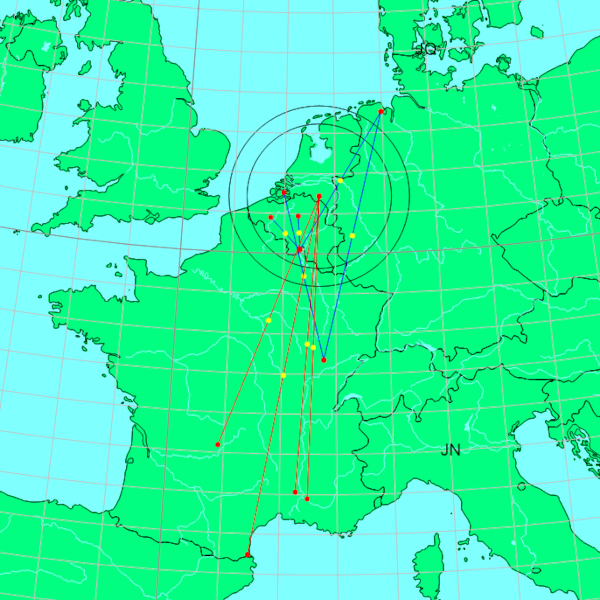
The same map with additional observations from the Dourbes beacon and Graves. Blue lines
Event 2
The pictures below show that the reflection point must have been between 480 and 500 km. Including the measurement inaccuracy, that area is somewhere between 430 and 550 km. The position of the received stations and the reflection area is also shown on a map.

Average puls duration of this screenshot is 148 samples (samplerate is 48000 Hz). De distance is 478 km.
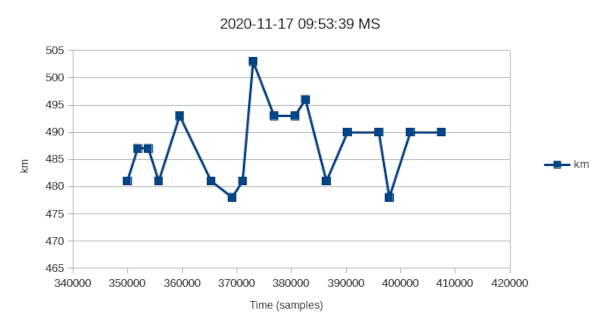
Several pulses in time versus distance.
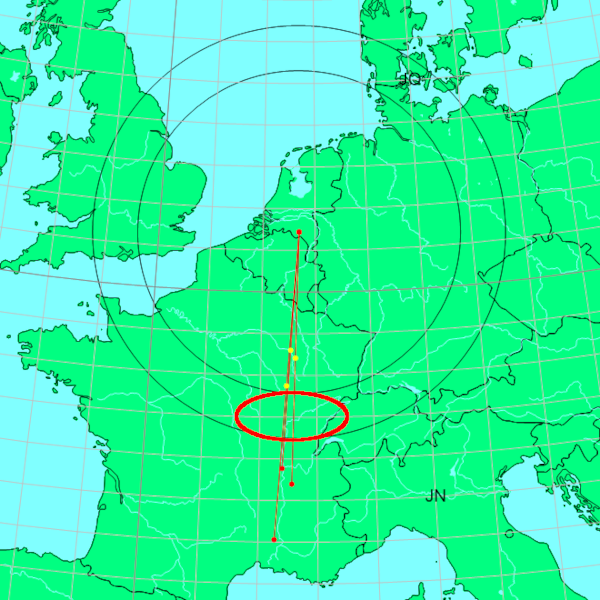
The red elipse is showing the reflection area.
Reference
Previous posts on this topic:
HOME | Go Back








